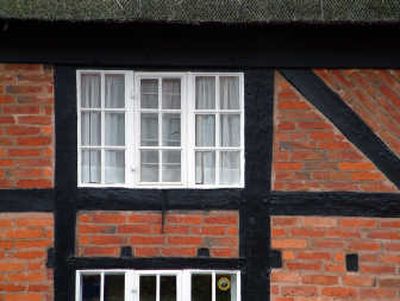Stucco project presents challenges

Dear Tim: Can you apply stucco to the exterior of a brick home? I have a small one-story ranch home. A friend of mine says this is not possible, but I am determined to learn how to stucco my own home. Is applying stucco a difficult task? Are there certain stucco textures I should avoid? What tips can you share to ensure the stucco does not peel off the house?
Gaynell M., Austin, Texas
Dear Gaynell: Good news! You can have stucco applied to your brick home. What I can’t answer is whether you have the skills to apply exterior stucco. Not only do you need the right tools and equipment, but you also need good hand-eye coordination to do the job well. These challenges are not insurmountable. You can rent the needed scaffolding and power mixer that will be required for the job. And you can hone your technique on a practice wall before trying to stucco your house.
Brick and concrete-block walls – even poured concrete walls – are excellent surfaces to stucco. It is a common practice to stucco exposed poured-concrete foundations to mask the irregularities created by the wood or metal forms. Stucco also does a splendid job of hiding mortar joints in concrete-block walls.
The first thing to do is to inspect your existing brick. It must be in good condition, clean and free of all dust. Now is the time to correct any water-infiltration issues in the brick, as well as any problems with the flashings above or below windows and doors. There are many wonderful stucco manuals and guides that show how to install flashings around windows and doors.
Applying stucco is almost always a two-step process. You typically apply a base or scratch coat that is approximately 3/8-inch thick. The stucco mixture is a combination of clean sand, masonry cement and Portland cement. Masonry cement is often a mixture of Portland cement and hydrated lime. You will discover that if you mix 1 part Portland cement plus 1 part masonry cement with 8 parts of clean, damp medium sand, you will get a splendid base stucco mix. The same proportions can be used for the finish coat of stucco.
Before you try applying the stucco to your home, I recommend that you practice first. It’s important that you get comfortable with the tools and techniques of applying the stucco. You can do this by building an 8-foot wide by 8-foot wide wall from two-by-fours. Cover the studs with 1/2-inch thick cement board. Be sure this temporary wall is secured well, so that it doesn’t tip over or get blown over by the wind.
Once you feel proficient, you may start on the walls of your house. Choose walls you rarely see or that can’t be seen from the street. You want the most visible walls to be stuccoed last, after you have discovered how to do a great job. Don’t worry about perfection when working with the base coat, since it will be covered with the finish coat. You want the base coat to be somewhat rough so the finish coat bites into it.
Prior to applying the base coat of stucco, be sure to get the brick wall damp by misting it with a hose. The brick you cover with stucco should always be damp just before it is coated. Try to avoid working on hot, dry, windy days. The best conditions to apply stucco are overcast days with the temperature between 50 and 60 degrees. Do not apply any stucco if the temperature will drop below 32 degrees within days of applying either the base or finish coat of stucco.
One of the best aspects of stucco is the infinite variety of textures you can create. I don’t know that there are any I would avoid, although I would try to do a texture that is a simple two-step process. When you apply the finish coat of stucco, try applying it in a random fashion and then overlap the different strokes slightly. The finish coat of stucco should not exceed 1/4 inch in thickness.
Experiment with different textures on the temporary wall where you learned how to apply the base-coat stucco. Stand back from the wall about 30 to 50 feet to see what it will look like from the street.